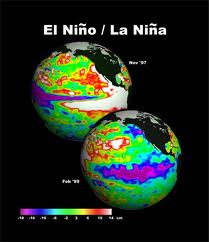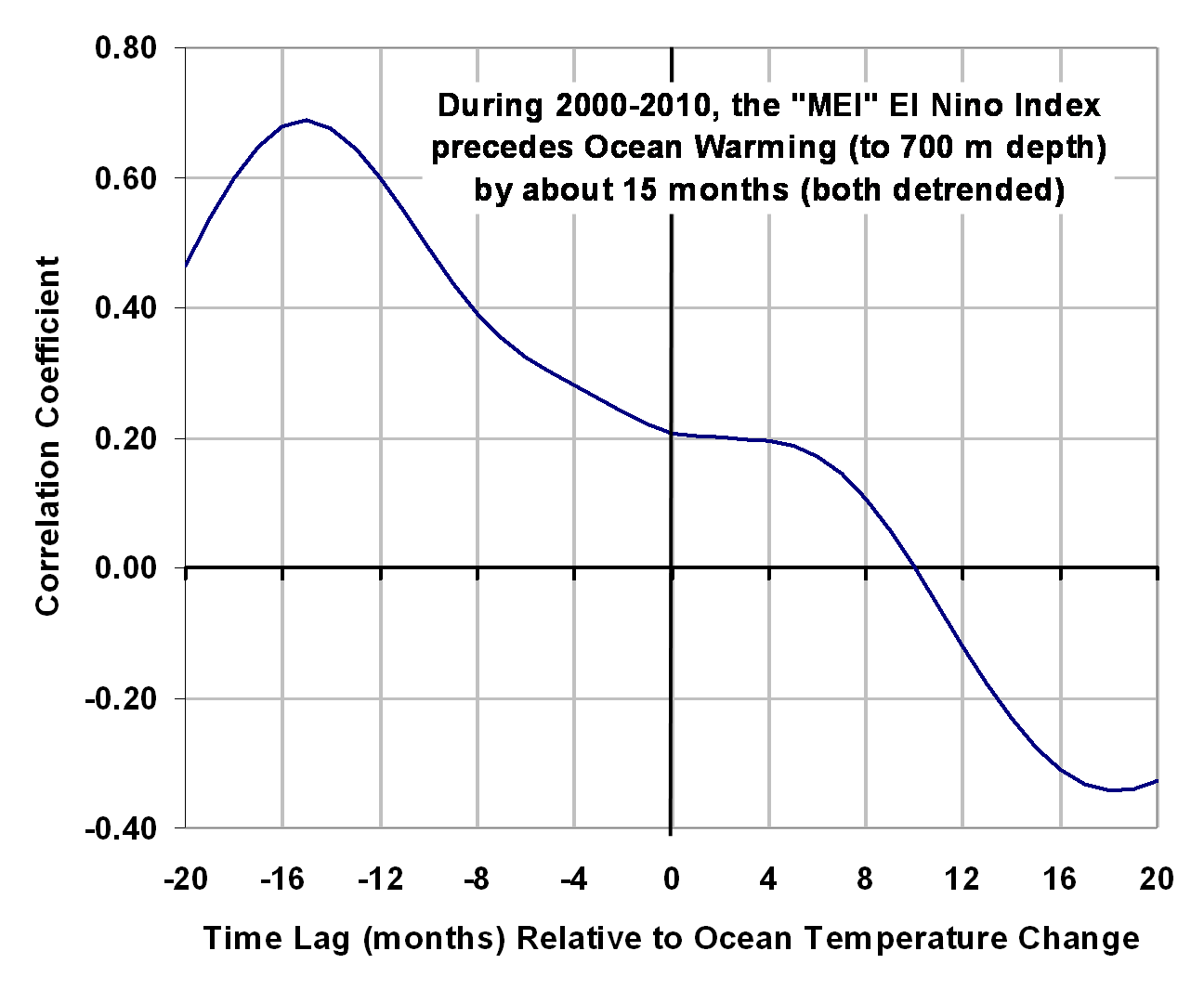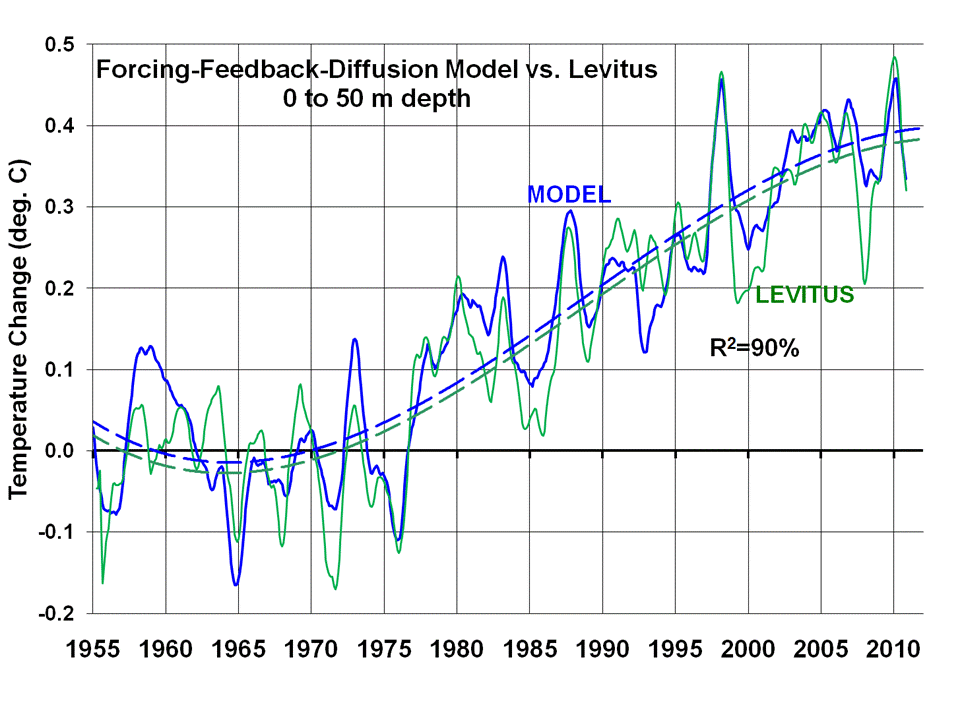 Yesterday’s press release from the UK Met Office introduces 2 new papers in Geophysical Research Letters which explain the recent lack of ocean warming, approximately since 2003. Most of the pause in warming is attributed to natural ENSO (El Nino-Southern Oscillation, that is, El Nino and La Nina) activity.
Yesterday’s press release from the UK Met Office introduces 2 new papers in Geophysical Research Letters which explain the recent lack of ocean warming, approximately since 2003. Most of the pause in warming is attributed to natural ENSO (El Nino-Southern Oscillation, that is, El Nino and La Nina) activity.
First of all let me say I agree with them. It is a step forward for the “skeptics” side of the global warming debate that the climate modelers finally admit that nature can have a role in global warming and cooling episodes… although they seem to be limiting that role to approximate 10-year time scales.
This at least a step in the right direction, since previously climate modelers would not admit to ENSO causing much more than year-to-year variability. Our own ocean modeling research, in progress, is suggesting that about 30% of the ocean warming trend since the 1950s is due to a shift to more frequent El Nino activity in the second half of that period, while the lack of ocean warming in the last 8 years appears to be from a shift back to La Nina activity.
So, the new GRL papers are one more step toward what some of us have been saying all along: Mother Nature is perfectly capable of causing her own climate change. The big question is: HOW MUCH of the ocean warming in the last 50 years has been due nature?
SOME UNANSWERED QUESTIONS
While I am supportive of these 2 papers from the standpoint of acknowledging the roll of El Nino and La Nina in global temperature change, these are just the first 3 issues that come to mind.
1) Both studies discuss the fact that even in the climate models, one does not necessarily expect warming in every decade in response to increasing CO2.
QUESTION: Since this is something that should have been known for about the last 20 years of climate modeling activities, why did they wait till warming stopped to mention it?
2) As you can see in Fig. 1 from the Katsman and Oldenborgh paper, they ignored the first 20 years of ocean heat content data, for the obvious reason that the observations showed no warming, while all of their model simulations indicated considerable warming. The reason they gave was a lack of good data before 1969.
QUESTION: What if the ocean observations DID show warming during those first 20 years? Would those years have been included in the analysis then, since they agreed with the model? Isn’t this rather obvious cherry picking?
3) In the same article, we see the following statement regarding the specific cause of a lack of ocean warming since 2003: “During 2002–2007, a series of El Niño events occurred, which probably yielded a larger than average upper ocean heat loss…” Excuse me? I believe they have this backwards…
QUESTION: If El Nino leads to a net LOSS of upper ocean heat, then why during this same period does a positive MEI index (indicating El Nino) precede WARMING of the 0-700 m ocean layer, as shown in the following plot (click for large version)?

This is how we were able to match the Levitus ocean heat content variations… by including a heat storage term where El Nino leads to heat gain, and La Nina leads to heat loss:

And, since there has been more frequent El Nino activity since the 1980’s, this is consistent with some of the warming being natural. Then, since 2000, this has begun to switch to more La Nina’s, resulting in the most recent slowdown in ocean warming.
What I fear is that because of this mistake in interpretation (the authors were merely postulating why recent warming stopped based upon the statistical behavior of climate models), that others will now point to that publication and claim it showed El Nino causes net cooling of the ocean, not warming. Sheesh.
Oh well, at least these papers represent at least a partial retreat from the IPCC’s anthropocentric view of the climate system.

 Home/Blog
Home/Blog



